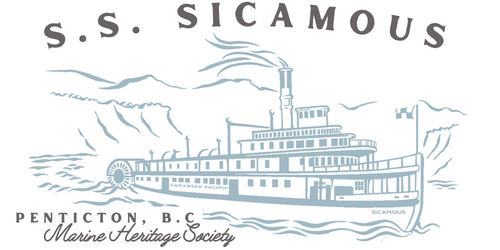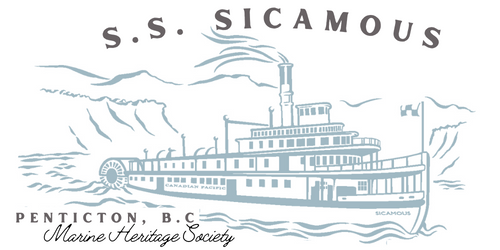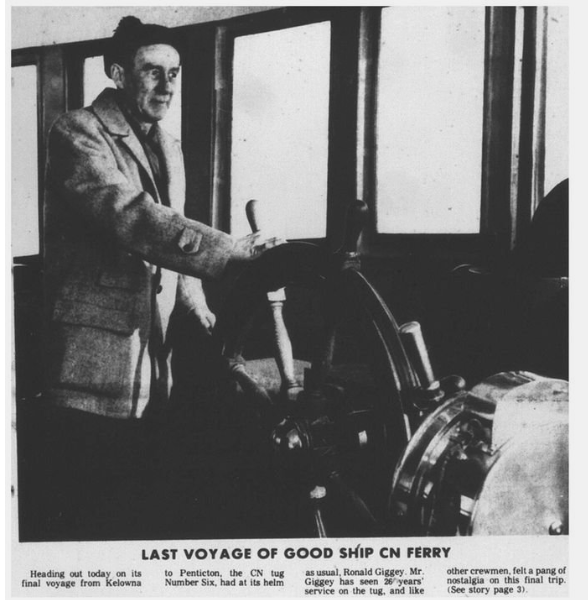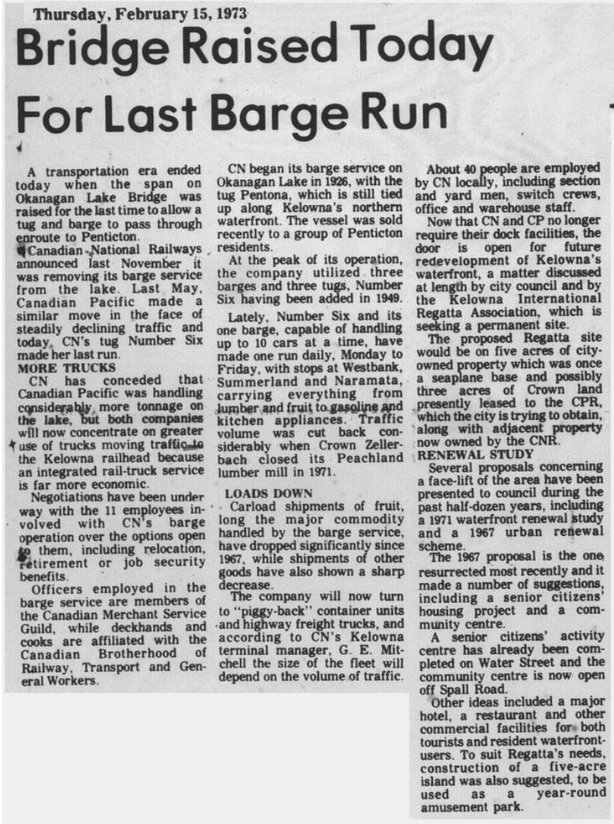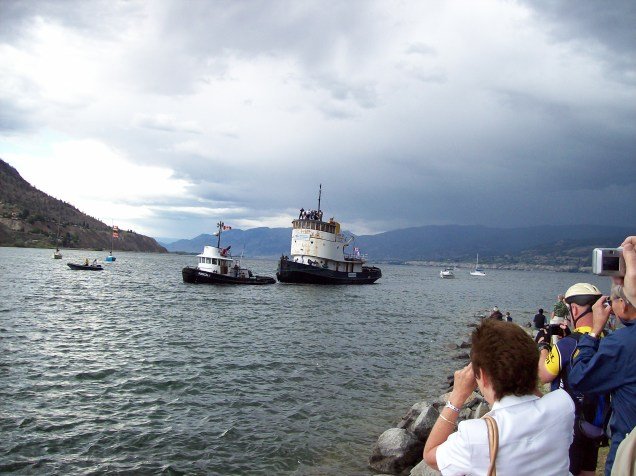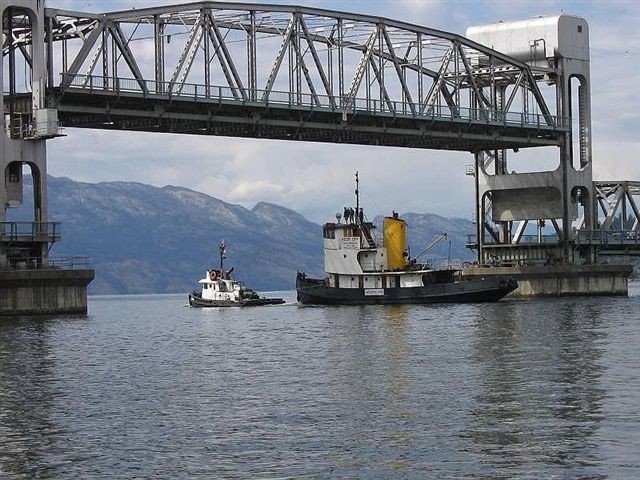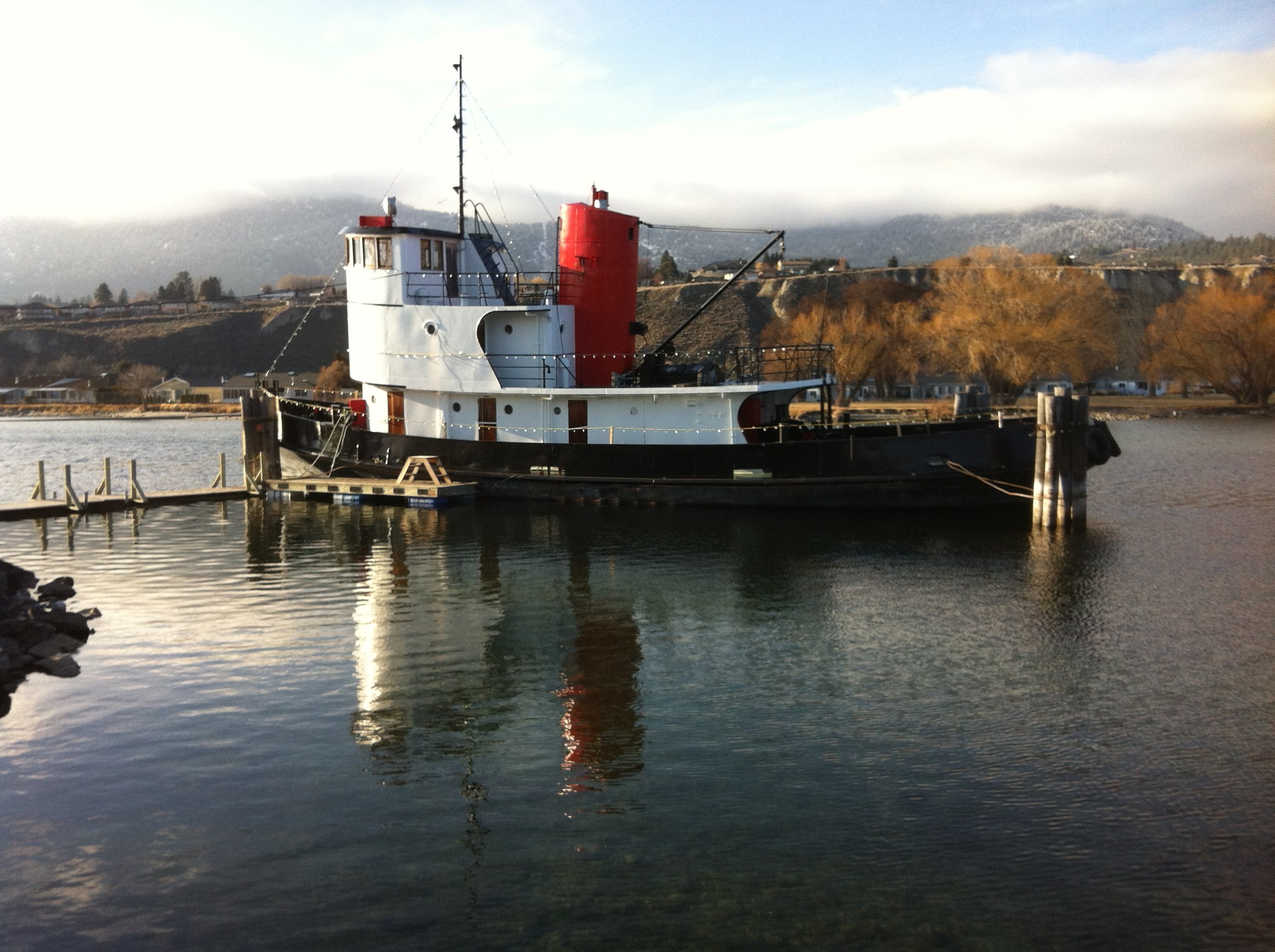
Canadian National No. 6 Tug Boat
Canadian National Tug Boat No. 6 is a diesel powered tug boat. It was operated by Canadian National Railways Company on Okanagan Lake. The tug was originally built in Esquimalt, BC, and was launched on Okanagan lake in 1948. She transferred railway barges between Penticton and Kelowna. Tug Boat No. 6 was the last tug boat to operate on Okanagan Lake, and its retirement in 1973 marked the end of an era in the valley. The Tug was moved to Penticton in 2007, to rest alongside the Stern Wheeler SS Sicamous, and the Tug Boat SS Naramata.
Important Dates for Tug #6:
Launch Date: August 6, 1948
Last Operated: February 1973
Moved to Penticton: June 16th, 2007
About the Canadian National Rail (CNR) Tug Boat Fleet
An intense rivalry gripped Canadian Pacific Railways (the CPR) and Canadian National Railways (the CNR). This lasted for the first half of the 20th century, and extended beyond the rails to the waters of Okanagan Lake. While the CPR Lake Service is more well known, with its glorious paddle wheelers and numerous work boats, the CNR also ran vessels on Okanagan Lake to serve their customers and link rail lines. One such vessel was the CN Tug No. 6.
The all-steel, 89.5 foot Tug No. 6 was launched in 1948 and sailed the waters of Okanagan Lake. Back in the 1940s and 50s when the roads were rough and there was no Okanagan Lake bridge, No. 6 and her siblings were an essential part of the valley’s transportation system and critical to the fruit industry.
Freshness and time-to-market was absolutely essential for the fruit industry. In her life on Okanagan lake Tug No. 6 would push and tow barges with railway cars each full of the fruit and crops from the harvest. They travelled from Penticton to Kelowna, where the cargo could join trains headed for west and east coast ports and then on to foreign markets. It’s likely that without the lake vessels there would have been no Okanagan fruit industry in the early days. It was the ability to get the fruit crops to their destinations swiftly that helped create the world-wide renown of Okanagan fruit.
After the construction of the motorways, life in the Okanagan gradually began to shift. Fruit growers came to rely more on automobiles and roads for transporting their valuable cargo to market. One by one the ships were removed from service, until only Canadian National number 6 remained. She too was retired, and had her last run in 1973. After that the tug went through a number of owners. In 1993 the tugboat was purchased by the Kelowna Museums Association for the sum of $35,000. The original intent was to construct a wharf in Tugboat Bay and have the Kelowna Museum Association restore and operate the tugboat as a floating Museum.
In 2007 the Kelowna museum arranged to donate the ship to the care of the S.S. Sicamous Marine Heritage Society in Penticton, BC.
Penticton residents come to greet the tug as it arrives at its new home.
The old Kelowna bridge is raised, as the two tug boats make the journey to Penticton.
Tug 6 Arrives in Penticton
Close up as Tug 6 is towed on her final trip to Penticton
Tug Boat Number 6 is now in the care of the SS Sicamous Society. Volunteers are out on the tug every week during the summer, working in the engine room. The generators are now repaired, and are able to provide electricity throughout the tug. The next project is repairing the main diesel engine.
